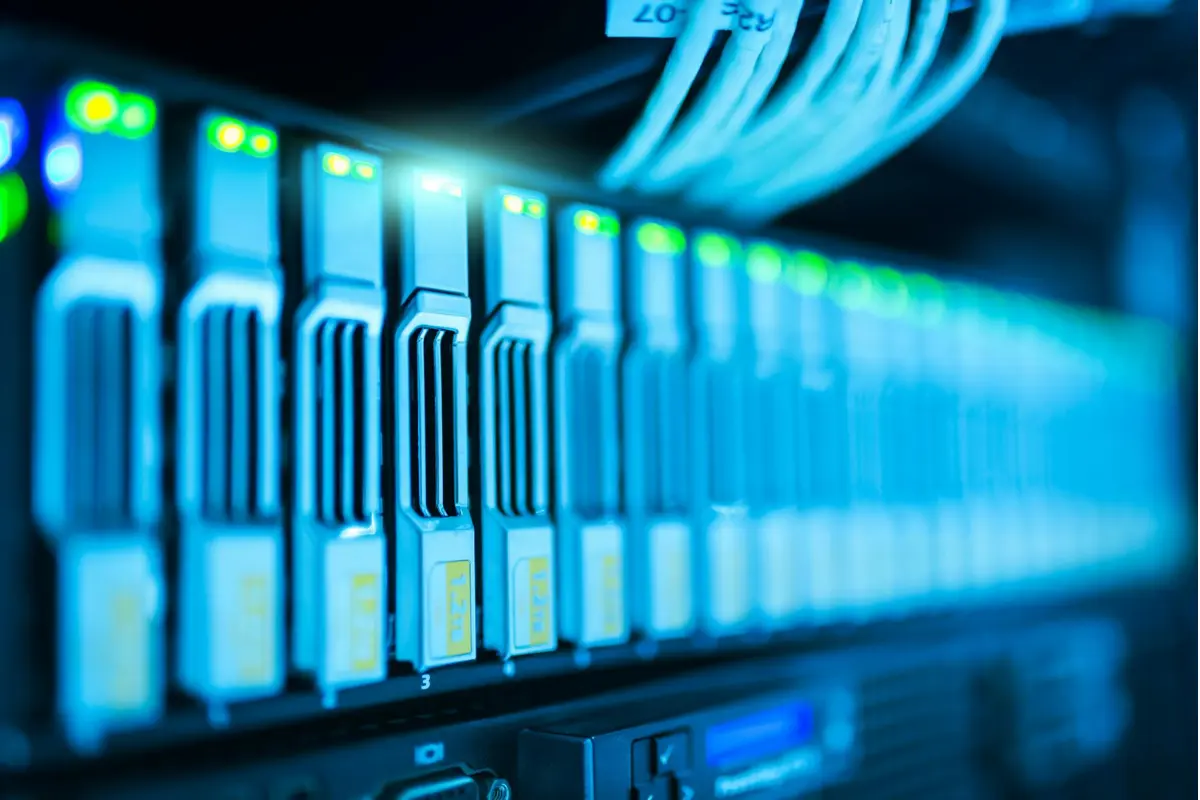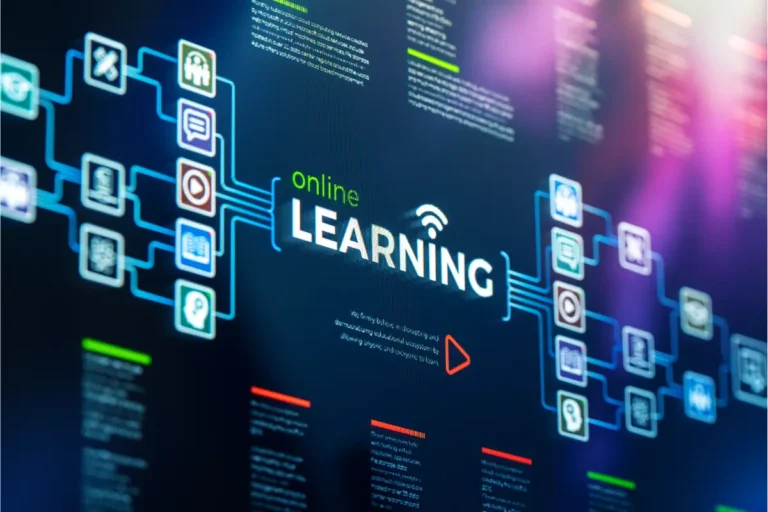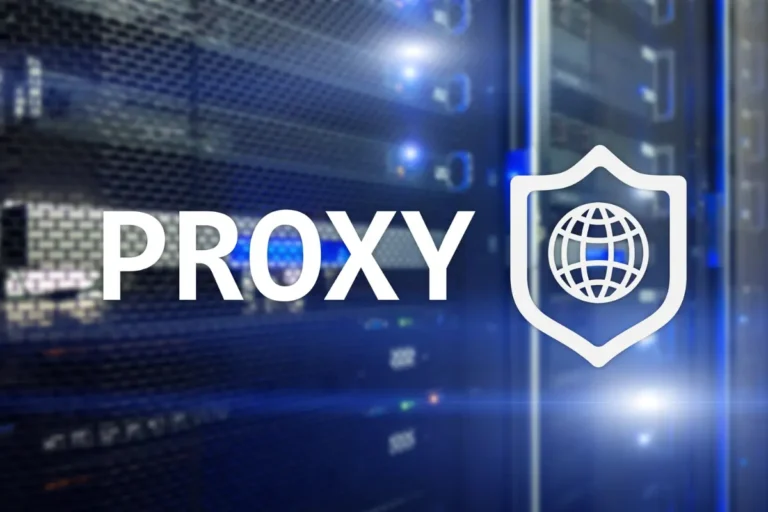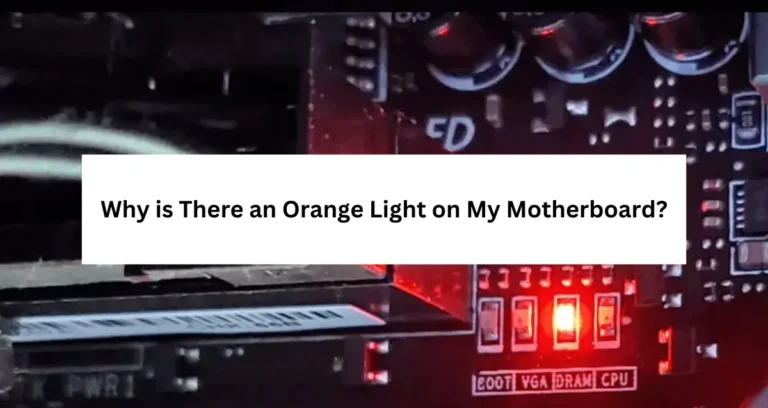Maximizing Efficiency in 3D Rendering: A Deep Dive into Render Farms and Their Benefits
Rendering 3D designs is an essential procedure in multiple sectors like movies, animation, gaming, and architecture. This method transforms intricate 3D models into top-notch images or animations, requiring significant computational resources and time. As the complexity of projects rises, there is a growing requirement for effective rendering methods. Render farms present an innovative way to handle these demanding tasks.
Understanding Render Farms
What is a Render Farm?
A render farm involves a group of powerful computers collaborating to render 3D images or animations. By dividing the tasks among numerous machines, render farms notably decrease the time required to finish extensive projects. These farms can be established on-site, utilizing a company’s equipment, or accessed via cloud-based services, presenting adaptability and expandability.
How Do Render Farms Work?
Rendering Farms are specialized setups designed to expedite the rendering process by utilizing the collective power of multiple high-performance computers. The operational efficiency of a render farm hinges on its ability to divide and conquer rendering tasks through parallel processing. Here is a detailed, technical overview of how render farms function:
Task Distribution and Management
- Job Submission:
- When a rendering task is submitted to the render farm, it is typically done through a job management system. This system could be a solution like Autodesk Backburner, Thinkbox Deadline, or proprietary to a render farm service’s package, such as GarageFarm.NET’s renderBeamer and Web Manager. The job management system can facilitate the preparation of a project for rendering on the farm, submission, tracking, and downloading of the finished frames.
- Scene Analysis and Segmentation:
- The render farm software analyzes the submitted scene file to understand its requirements, such as the number of frames, the complexity of each frame, and the specific settings of the render engine used (e.g., V-Ray, Redshift, etc.). The scene is then divided into smaller, more manageable tasks. For animation projects, this often means dividing the work by frames or even segments of frames.
- Task Assignment:
- Each segment or frame is assigned to an available render node. A render node is a single computer or server in the render farm. The job management software dynamically allocates tasks based on the current load, capacity, and performance characteristics of each node, ensuring optimal resource utilization.
Parallel Processing and Rendering
- Distributed Rendering:
- Once tasks are distributed, each render node processes its assigned segment independently. Distributed rendering leverages the capabilities of multiple nodes to work on different parts of the project simultaneously. This is where the true power of parallel processing shines, drastically reducing the total render time.
- Resource Optimization:
- Nodes are equipped with high-performance CPUs, GPUs, and large amounts of RAM to handle complex calculations and large datasets. The efficiency of a render farm is enhanced through techniques like load balancing, where tasks are dynamically reassigned to prevent any single node from becoming a bottleneck.
Data Management and Transfer
- File Storage and Access:
- Centralized storage solutions, such as Network Attached Storage (NAS) or Storage Area Networks (SAN), are used to store the project files, assets, and rendered outputs. High-speed connectivity, often using Gigabit Ethernet or even 10 Gigabit Ethernet, ensures fast data transfer rates between nodes and storage.
- Caching and Intermediate Storage:
- To further optimize performance, intermediate data, and cache files are often stored locally on each render node. This reduces the need for frequent access to centralized storage, thus minimizing network congestion.
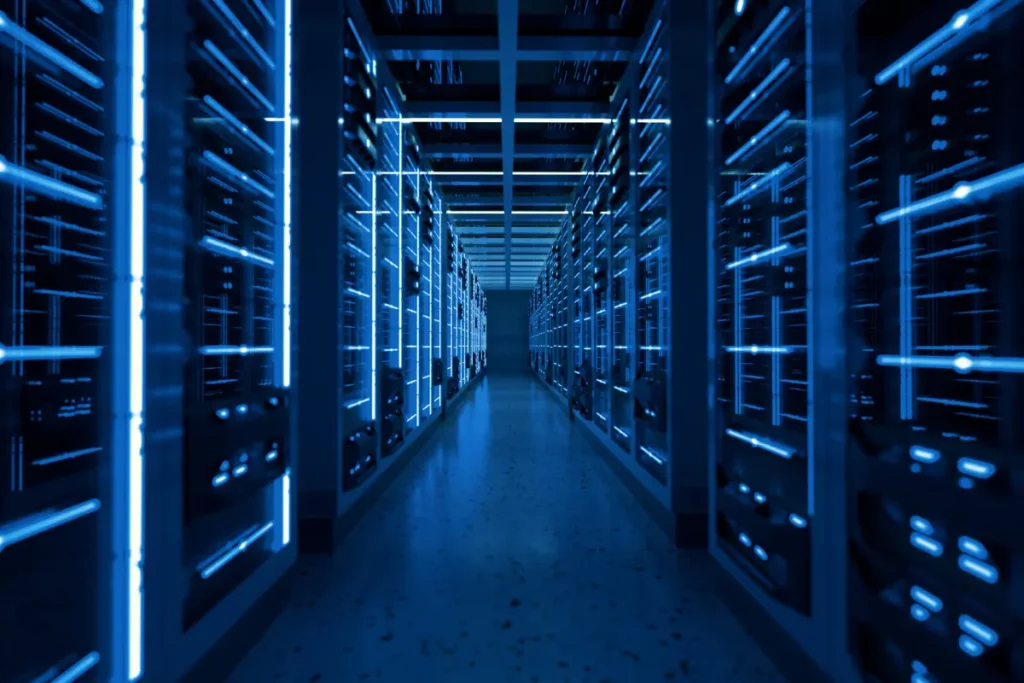
Render Completion and Assembly
- Frame Assembly:
- Once individual frames or segments are rendered, they are sent back to the centralized storage or directly to the job management system. The system reassembles these frames in the correct sequence to produce the final output. For complex scenes that are rendered in multiple passes (such as lighting, textures, and shadows), these passes are also organized during this stage.
- Quality Control and Error Handling:
- The job management system includes tools for monitoring and quality control. If a failure to render any frame is detected, those tasks can be re-assigned and re-rendered. This ensures that the final output meets the desired quality standards without any artifacts or glitches.
Monitoring and Scaling
- Real-Time Monitoring:
- Administrators can monitor the status of each node and the progress of the rendering tasks in real time through dashboards provided by the job management software. This visibility allows for quick identification and resolution of any issues that arise during the rendering process.
- Scalability:
- Render farms can scale horizontally by adding more nodes to the network. This scalability allows them to handle increasing workloads and more complex projects efficiently. Cloud-based render farms, in particular, offer elastic scalability, where resources can be dynamically allocated based on demand.
Benefits of Using Render Farms
Speed and Efficiency
Render farms dramatically speed up the rendering process by leveraging multiple machines to handle the workload. This efficiency is particularly beneficial for time-sensitive projects, enabling artists to meet tight deadlines without compromising quality.
Cost Savings and Resource Management
Although setting up an in-house render farm requires an initial investment, the long-term cost savings can be substantial. Cloud-based render farms eliminate the need for purchasing and maintaining high-end hardware, offering a scalable solution where users pay only for the resources they use, optimizing cost management.
Enhanced Quality and Precision
Render farms provide the computational power needed to produce high-quality renders with greater detail and precision. Complex scenes with intricate lighting, textures, and effects can be rendered without sacrificing quality, which is crucial for industries like film and gaming where visual fidelity is paramount.
GarageFarm.net: A Comprehensive Solution
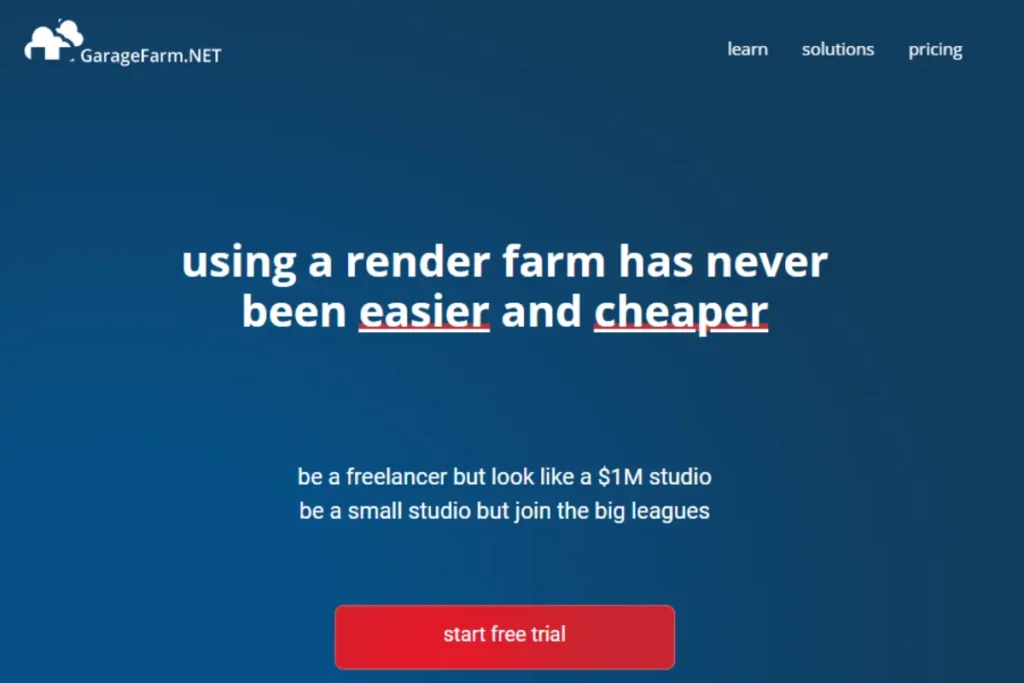
Introduction to GarageFarm.net
GarageFarm.net is a cloud-based render farm service tailored for 3D artists and studios. It offers powerful hardware, user-friendly interfaces, and comprehensive support, making it a popular choice for both small studios and large production houses.
Features and Benefits
GarageFarm.net includes a range of features designed to enhance the rendering process:
- Scalability: Users can adjust their rendering capacity based on project needs.
- Compatibility: The service supports a wide array of 3D software and render engines, ensuring seamless workflow integration.
- User-Friendly Interface: The intuitive interface simplifies task management, from uploading files to monitoring progress.
- Cost-Effective Pricing: Flexible pricing models, including pay-as-you-go options, make it accessible for projects of all sizes.
- 24/7 Support: Dedicated support teams are available around the clock to assist with any issues or questions.
User Testimonials and Success Stories
Many users have reported significant improvements in their workflow and output quality after switching to GarageFarm.net. For instance, an independent animation studio experienced a 50% reduction in rendering time for their latest short film, allowing them to focus more on creative aspects rather than technical constraints. Similarly, a game developer praised the service for its cost-effectiveness and ease of use, enabling them to meet project deadlines without exceeding their budget.
Technical Insights
Technical Requirements and Considerations for Setting Up a Local Render Farm
To set up a local render farm, several critical technical requirements and considerations need to be addressed:
- High-Performance Hardware:
- CPUs and GPUs: Multiple high-performance processors and graphics cards are necessary to handle intensive rendering tasks.
- RAM: Sufficient memory is crucial to manage large 3D files and complex scenes. Typically, each node should have at least 16GB of RAM, but more demanding projects may require 32GB or more.
- Storage: Fast storage solutions such as SSDs are essential to ensure quick access to files and reduce bottlenecks. Network-attached storage (NAS) can be used to centralize data storage for all nodes.
- Networking:
- A robust and fast network infrastructure is vital to facilitate quick data transfer between nodes. Gigabit Ethernet is commonly used, but for larger setups, 10 Gigabit Ethernet may be necessary.
- Rendering Software:
- Ensure compatibility with the 3D software (Blender, 3ds Max, Maya, Cinema 4D) and render engines (V-Ray, Arnold, Cycles) you plan to use. Some render farms also support distributed rendering features built into these software packages.
- Job Management Software:
- Software like Deadline, RenderMan, or Backburner helps manage and distribute rendering tasks efficiently across the farm. These tools can automate job queuing, prioritization, and resource allocation.
- Cooling and Power:
- Adequate cooling solutions are necessary to prevent overheating, especially when running multiple high-performance machines. Additionally, ensure a stable power supply with backup options like uninterruptible power supplies (UPS) to avoid interruptions.
- Maintenance and Updates:
- Regular maintenance, software updates, and hardware upgrades are necessary to keep the render farm running smoothly and efficiently.
How GarageFarm.net Ensures the Security of User Data and Intellectual Property
GarageFarm.net places a high priority on the security of user data and intellectual property. Here are some of the measures they take:
- ISO Certification:
- GarageFarm.net is ISO certified, which means they adhere to internationally recognized standards for information security management. This certification demonstrates their commitment to maintaining high-security standards and ensuring the confidentiality, integrity, and availability of user data.
- Data Encryption:
- All data transferred to and from GarageFarm.net is encrypted using industry-standard encryption protocols. This ensures that sensitive information remains secure during transmission.
- Secure Servers:
- GarageFarm.net uses secure servers with advanced firewalls and intrusion detection systems to protect data from unauthorized access and cyber threats.
- Access Control:
- Strict access control measures are in place to ensure that only authorized personnel can access user data. This includes multi-factor authentication and role-based access controls.
- Regular Security Audits:
- Regular security audits and vulnerability assessments are conducted to identify and address potential security risks. This helps maintain a high level of security and compliance with industry standards.
- Data Privacy Policies:
- GarageFarm.net adheres to strict data privacy policies to ensure that user data is handled responsibly and in accordance with relevant data protection regulations.
- Confidentiality Agreements:
- All employees and contractors are required to sign confidentiality agreements to protect the intellectual property and sensitive information of users.
Applications
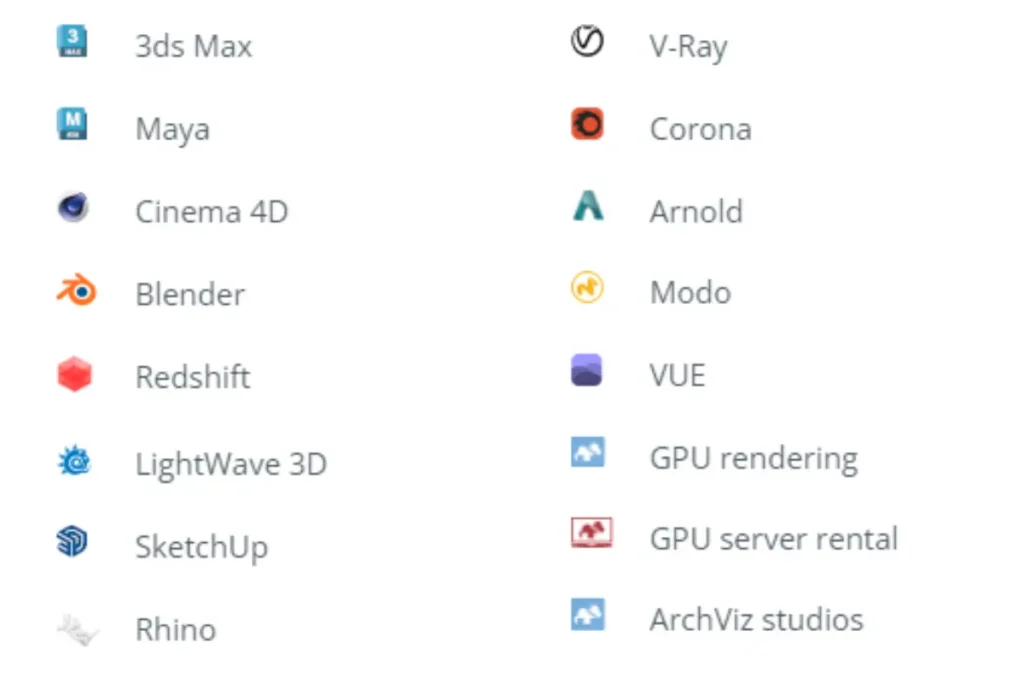
Types of Projects Using Render Farms
Render farms have been instrumental in bringing several high-profile projects to life:
- Film: Blockbuster movies rely on render farms to handle the immense rendering requirements of complex visual effects and CGI.
- Animation: Studios like Pixar and DreamWorks utilize render farms to produce animated features with intricate details and realistic lighting.
- Gaming: Game developers use render farms to create detailed game environments and cinematic cutscenes.
- Architecture: Architectural visualization firms employ render farms to produce photorealistic images and walkthroughs of building designs.
Applications in Film, Animation, Gaming, and Architecture
In film and animation, render farms enable the creation of visually stunning scenes that would be impossible to achieve with limited hardware. For gaming, they ensure high-quality assets and environments are rendered efficiently, enhancing the player’s experience. In architecture, render farms allow for the rapid generation of high-resolution images and animations, aiding in client presentations and project approvals.
Future Trends in Render Farming
Emerging Technologies
The future of render farming is being shaped by several emerging technologies:
- AI and Machine Learning: These technologies are being integrated into rendering workflows to optimize processes and improve output quality.
- Real-Time Rendering: Advancements in real-time rendering are reducing the need for traditional render farms, particularly for applications like virtual production and interactive experiences.
- Quantum Computing: While still in its infancy, quantum computing holds the potential to revolutionize rendering by solving complex calculations exponentially faster than current systems.
Predictions for the Future
As technology continues to evolve, render farms will likely become even more efficient and accessible. Cloud-based solutions will dominate the market, offering unparalleled scalability and flexibility. The integration of AI and real-time rendering techniques will further streamline workflows, allowing artists to focus more on creativity and less on technical limitations.
Conclusion
Render farms are an essential resource in the 3D rendering process, providing another level of speed, efficiency, and quality. By harnessing the capabilities of parallel processing, they empower artists and studios to easily handle large projects. Services such as GarageFarm.net offer a complete solution, integrating powerful hardware, user-friendly interfaces, and adaptable pricing to accommodate any project’s requirements. As the industry progresses, render farms will continue to foster innovation and enrich the capabilities of 3D artists globally.

